Contender three, step forward
AMD's mid-range HD 7770 GPU debuted last week to mixed reviews, with the £125 asking price bringing meatier cards very much into play. However, partners have been busy cooking up their own designs, knowing full well that the older-generation GPUs, representing a rather large thorn in HD 7770's side, are soon to be made end of life.
Radeon HD 7770 contender number three, step forward. We've seen PowerColor and Sapphire have a go, but now it's the turn of industry stalwart MSI to show others how it's done. The firm has two non-reference HD 7770 cards in its line-up that both look the same. The R7770-2PMD1GD5 model clocks in at a standard 1,000MHz core and 4,500MHz memory, while the version in for review today, R7770-2PMD1GD5/OC, simply jacks up the core speed by 20MHz, to 1,020MHz.
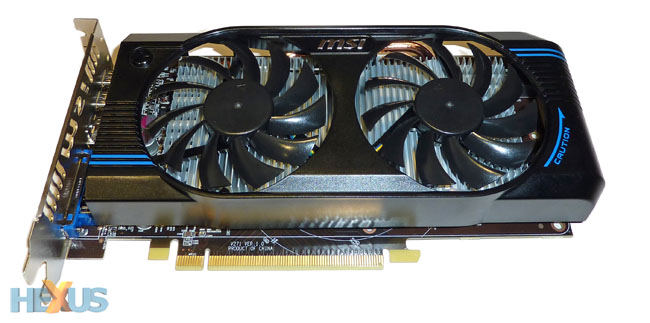
First indications are that MSI has gone to town on the reference card and launched something altogether different, supplanting the single-fan cooler with a dual-fan version that's reckoned to drop under-load temperatures by a healthy margin.
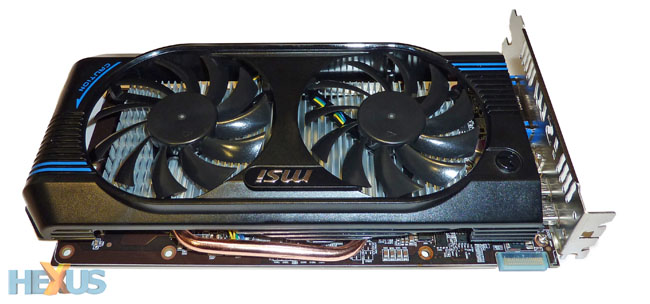
The full-length, dual-slot cooler hangs just over the edge of the 8.25in PCB. Two 80mm fans, suspended over the cooler, push the heat out to the sides and rear of the I/O section, and placing one's hand in close proximity to the card when gaming indicates that more heat escapes into the chassis than out.
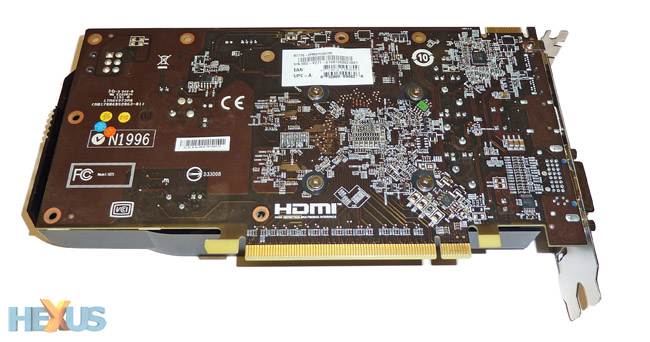
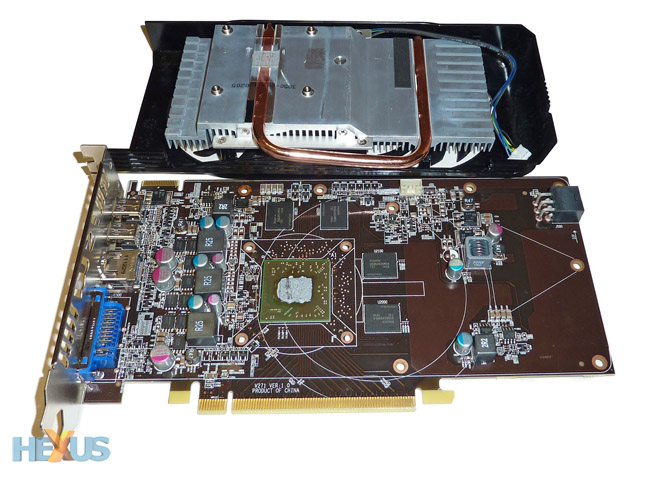
Take off the cooler and its workings become clear. The GPU-touching 'pipe helps convey the heat through to the far side of the cooler. There's little need to use copious amounts of copper for a GPU that's reckoned to pull 80W or so under typical gaming load.
Zoom into the PCB and it mirrors that of AMD's, right down to the front-end location of the six-pin PCIe power connector. MSI's Radeon HD 7770, then, is a reference card with a different cooler on top. There's actually little reason why an add-in board partner would go to the lengths of designing a wholly custom PCB for a mainstream GPU; such activities are left for special-edition models of genuinely high-end cards such as the Radeon HD 7950 or HD 7970.
We know the core runs 20MHz faster than the standard 1GHz for this OC model, but the memory's credentials remain untouched, operating at an effective 4,500MHz. It appears as if AMD bought a job-lot of Hynix GDDR5 memory, for we see it on each and every Radeon HD 7000-series card thus far.
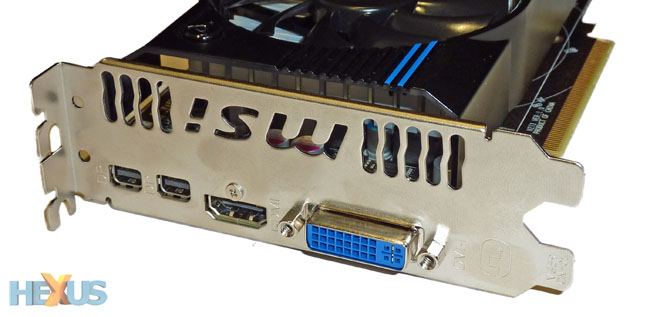
Toeing the reference line also means the rear outputs are to AMD's specification, that is, dual-link DVI, HDMI and two mini-DisplayPorts.
Bundle-wise, of note, MSI throws in a mini-DisplayPort-to-DisplayPort adapter. AMD makes concerted noise about the excellence of its multi-display Eyefinity Technology, though, as it stands, you'd need a DisplayPort-equipped monitor to take advantage of three screens.
Pre-benchmark summary
MSI's been very conservative in the frequencies for its £130 Radeon HD 7770 OC, raising the core by just 20MHz and leaving memory untouched, resulting in 1,020MHz/4,500MHz speeds. Sapphire, for example, goes much farther by clocking its equivalent part at 1,150MHz core and 5,000MHz memory, while others go higher still.









